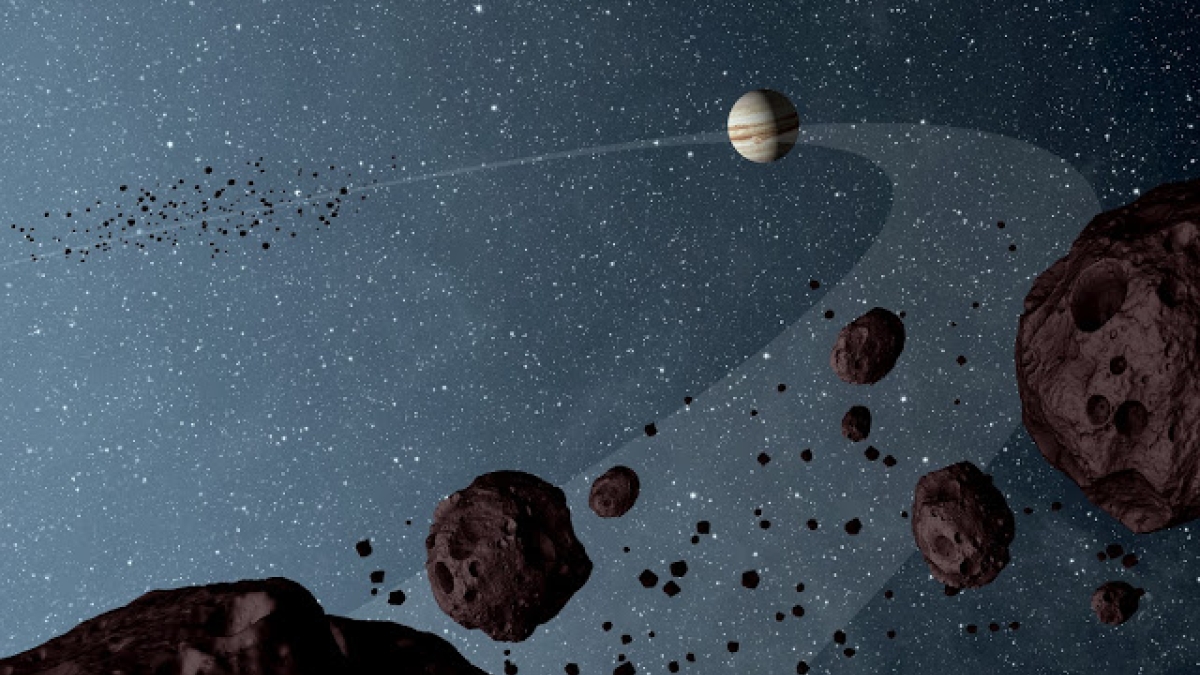An 'out-of-this-world' honor: Asteroids named for 2 ASU faculty members

Two Arizona State University professors can add an unusual honor to the long list of accolades they have received: An asteroid has been named after each of them. This "out-of-this-world" honor has been conferred on professors Phil Christensen and Dave Williams. The two planetary geologists, both faculty members in ASU’s School of Earth and Space Exploration, now have even more reason to be gazing at the night sky.
You know the names of our solar system’s planets, but you might not have realized that thousands of asteroids and minor planets revolving around the sun also have names.
Asteroid (10461) Dawilliams was discovered on December 6, 1978, by E. Bowell and A. Warnock at Palomar Observatory. It orbits about 2.42 astronomical units from the Earth in the Main Belt, the vast asteroid belt located between the orbits of Mars and Jupiter.
Despite Hollywood’s love of Earth-smashing asteroid blockbusters, Williams has no worries that “his” asteroid will make doomsday headlines.
“It’s very unlikely that it will hit Earth, as it is in a stable orbit in the Main Belt,” explains Williams.
Also honored with an asteroid named for his work is Christensen, the instrument scientist for the OSIRIS-Rex Thermal Emission Spectrometer, a mineral-scouting instrument on the OSIRIS-REx mission to asteroid Bennu. He was also the principal investigator for the infrared spectrometers and imagers on NASA’s Mars Global Surveyor, Mars Odyssey and Mars Exploration Rovers.
The asteroid is named (90388) Philchristensen and, like Williams’, it too is a Main Belt asteroid that is relatively small – approximately 4.6 kilometers (2.8 miles) across. It was discovered November 24, 2003 by the Catalina Sky Survey. It also poses no risk of collision with Earth.
“My research has long focused on Mars,” says Christensen. “But my broader interests involve all solar system bodies, and I’ve spent the last several years working on an asteroid mission. I really appreciate this honor.”
What’s in a name?
Having a namesake in the sky is no small honor. Unlike the selling of star names over the Internet, the naming of asteroids is serious business, presided over by the International Astronomical Union (IAU), an organization of professional astronomers.
Upon its discovery, an asteroid is assigned a provisional designation by the Minor Planet Center of the IAU that involves the year of discovery, two letters and, if need be, further digits. When its orbit can be reliably predicted, the asteroid receives a permanent number and becomes eligible for naming. Proposed names must be approved by the IAU’s Committee on Small Body Nomenclature.
Although many objects end up being named after astronomers and other scientists, some discoverers have named the object after celebrities. All four Beatles have their names on asteroids, for example, and there is even one named after James Bond – Asteroid (9007) James Bond.
“I was very surprised to receive this honor from the astronomical community. Only a select few of the Dawn at Vesta participating scientists, who did exemplary work during the mission, were so honored,” said Williams, whose expertise in mapping of volcanic surfaces has been key to developing geologic maps of planetary bodies that include Mars, Io and Vesta.
Christensen and Williams share this honor with several colleagues in the School of Earth and Space Exploration. The following all have namesakes in the sky:
• Erik Asphaug, professor – Asteroid (7939) Asphaug
• Jim Bell, professor – Asteroid (8146) Jimbell
• Lindy Elkins-Tanton, Foundation Professor and School of Earth and Space Exploration director – Asteroid (8252) Elkins-Tanton
• Ronald Greeley, professor emeritus – Asteroid (30785) Greeley, and Greeley’s Haven (on Mars)
• Carleton Moore, Regents’ Professor Emeritus – Asteroid (5046) Carletonmoore
• Sumner Starrfield, Regents’ Professor – Asteroid (19208) Starrfield
• Meenakshi Wadhwa, professor – Asteroid (8356) Wadhwa